Guacamayos en Bioparque Temaiken / Macaws in Temaiken Biopark
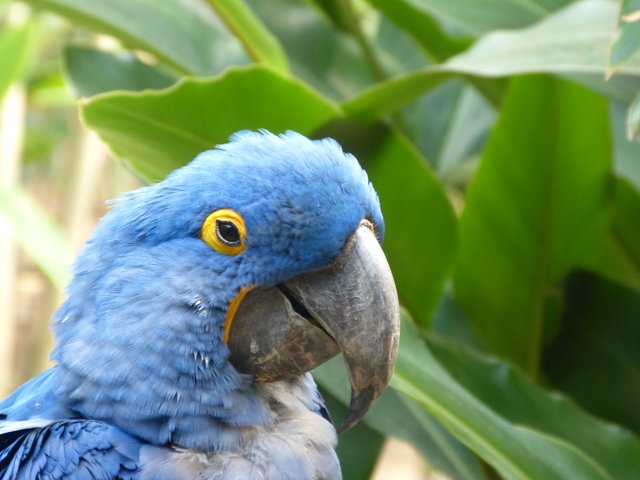
Siguiendo con el recorrido por el Bioparque Temaiken, comparto con ustedes otra serie de fotos del sector de las aves.
Following the tour of the Temaiken Biopark, I share with you another series of photos of the bird sector.
En este lugar tenemos varios aviarios (jaulas realmente inmensas) con más de 2500 especies de aves de los cinco continentes (América, Asia, Europa, Oceanía y África) siendo el más grande de todo América del Sur. es esta oportunidad compartiré con ustedes algunas fotos de las diferentes especies de guacamayos presentes en el lugar, mencionando las principales características muchas de las cuales son comunes en todas las especies diferenciándose básicamente en su distribución geográfica.
In this place we have several aviaries (really huge cages) with more than 2500 species of birds from the five continents (America, Asia, Europe, Oceania and Africa) being the largest in all of South America. It is this opportunity I will share with you some photos of the different species of macaws present in the place, mentioning the main characteristics many of which are common in all species, differing basically in their geographical distribution.
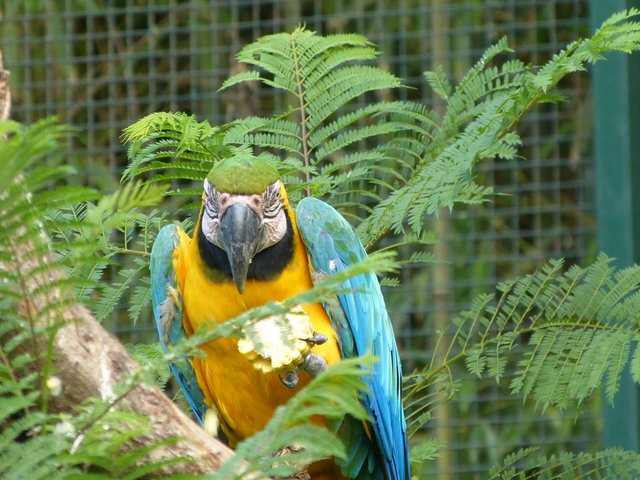
Guacamayo azul y amarillo:
Habita desde Panamá hasta el norte de Argentina y los podemos encontrar en las selvas tropicales y subtropicales de nuestro continente. Puede llegar a medir hasta 90 centímetros y forman parejas monógamas que pueden vivir hasta 80 años. Las hembras ponen dos huevos que son incubados durante 25 días aproximadamente y permanecen con sus padres hasta que aprenden a volar solos .Se alimentan de plantas, frutos y semillas muchas de las cuales son venenosas para lo cual comen arcilla de las riveras de los ríos para poder contrarrestar los efectos. Las características señaladas también corresponden con el guacamayo azul
Blue and Yellow Macaw:
Inhabits from Panama to northern Argentina and we can find them in the tropical and subtropical forests of our continent. It can measure up to 90 centimeters and form monogamous couples that can live up to 80 years. The females lay two eggs that are incubated for approximately 25 days and remain with their parents until they learn to fly alone. They feed on plants, fruits and seeds many of which are poisonous for which they eat clay from the river banks to to counteract the effects. The characteristics indicated also correspond to the blue macaw
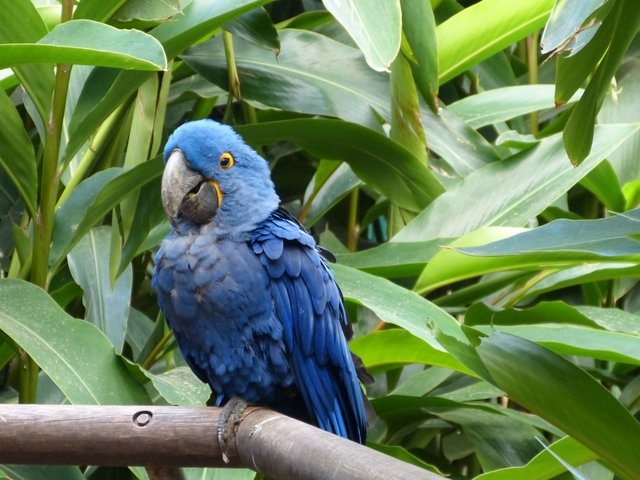
Guacamayo azul:
Esta especie de ave se la considera extinta en la vida silvestre, pero aún sobreviven varios ejemplares en cautiverio. Es unos de los más famosos gracias a la película Río que versa justamente de la problemática de la extinción de esta especie debido al contrabando de animales y también a la pérdida de su hábitat en manos del hombre.
Es una especie única de Brasil. Su tamaño promedio es de 70 centímetros y su pico es uno de los más fuertes ya que se alimenta de nueces, coco, mango, semillas y demás frutas. es resto de las características a destacar son similares a la de los guacamayos azul y amarillos
Blue Macaw:
This bird species is considered extinct in wildlife, but several specimens still survive in captivity. It is one of the most famous thanks to the movie Rio that deals precisely with the problem of extinction of this species due to animal smuggling and also the loss of its habitat at the hands of man.
It is a unique species of Brazil. Its average size is 70 centimeters and its peak is one of the strongest since it feeds on nuts, coconut, mango, seeds and other fruits. It is the rest of the features to highlight are similar to that of the blue and yellow macaws
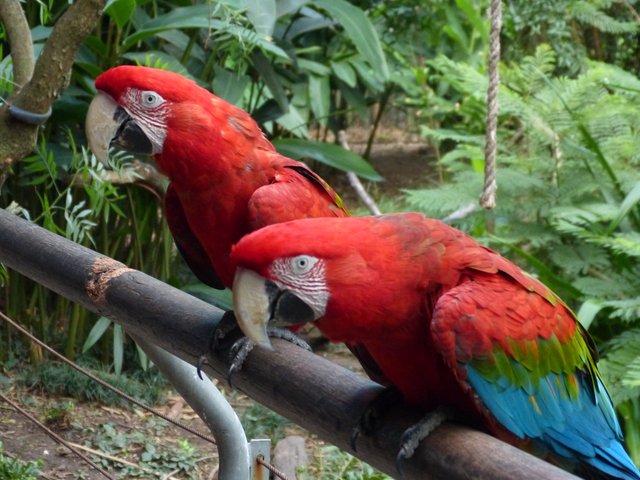
Guacamayo Ara Macaoo Guacamayo Bandera:
Esta especie de guacamayos puede llegar a medir hasta 90 centímetros y habita desde las selvas y bosques tropicales de México hasta el centro Bolivia. Sus hábitos reproductivos y alimenticios son muy similares a las dos especies antes mencionadas.
Macaw Ara Macaoo Macaw Flag:
This species of macaws can reach up to 90 centimeters and inhabits from the jungles and tropical forests of Mexico to central Bolivia. Their reproductive and nutritional habits are very similar to the two species mentioned above.
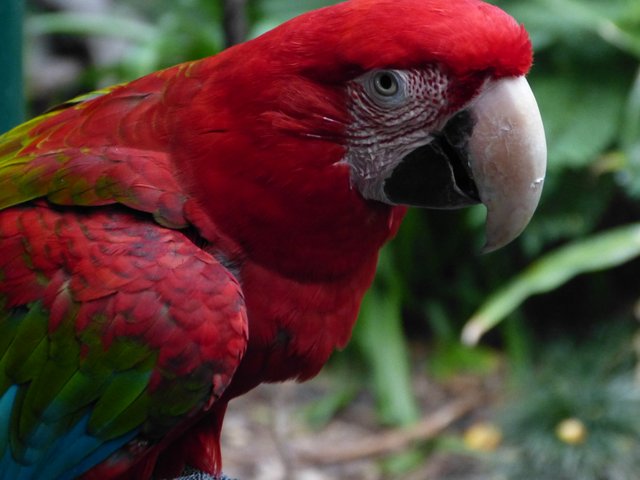
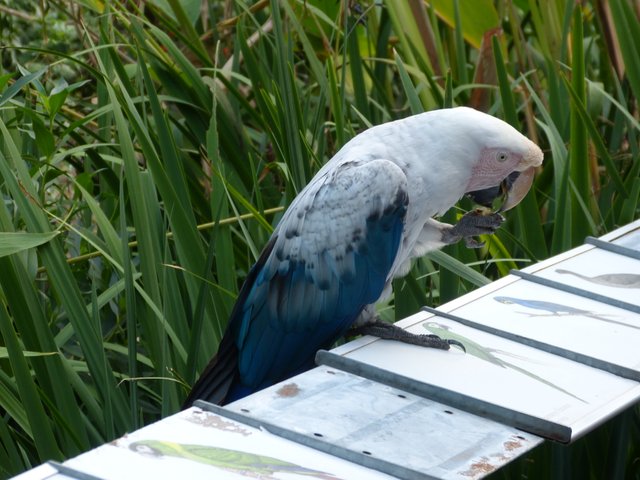
Este sector es realmente uno de los más bellos del bioparque ya que uno va paseando dentro de las jaulas caminando al lado de todas las aves muchas de las cuales produce un impacto tremendo al tenerlas prácticamente al lado de uno, en especial estos simpáticos guacamayos. Si bien son llamativos por sus colores y por ser extravagantes, les aseguro que por el tamaño que tiene uno toma sus reparos a la hora de acercarse demasiado, ya que tienen un gran pico y uno nunca sabe que puede pasar. Es cuestión de acercarse un rato y apurarse en tomar una linda fotografía.
This sector is really one of the most beautiful in the biopark since one is walking inside the cages walking next to all the birds, many of which produce a tremendous impact by having them practically next to one, especially these nice macaws. Although they are striking for their colors and for being extravagant, I assure you that because of the size you have, you take your repairs when you get too close, since they have a large beak and you never know what can happen. It is a matter of approaching a while and hurrying to take a beautiful picture.
Panasonic Lumix FZ150 camera
Hermosas guacamayas, sobre todo la azul quizá por lo poco común. Coincido contigo, creo que estas aves en los parques se acostumbran al contacto humano y parecen posar para el visitante. Saludos.
Gracias por tus palabras querida @belkisa758! Una cosa es verlos en vivo y otra cosa en las fotos. Son verdaderamente grandes
Gracias por tus palabras querida @belkisa758! Una cosa es verlos en vivo y otra cosa en las fotos. Son verdaderamente grandes